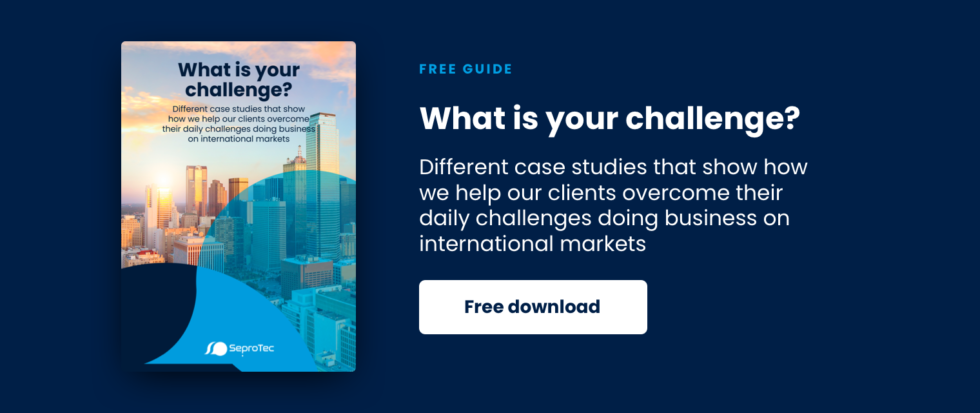
Top Learning Trends and Successful Localization
Technology is moving faster than ever before and has completely transformed the learning industry in the last 5 years. What used to take months to develop and launch, can now be done in a matter of weeks. The latest Content Management Systems (CMS) mean that tasks that were once laborious, taking countless hours, can now be completed with a few clicks of a mouse, allowing learning professionals to streamline their launches. Whether it’s video editing, developing course structure, adding gamification or in-depth data analysis, technology has made learning much easier for a global and multilingual audience. Unfortunately, many Language Service Providers just haven’t been able to keep up with the technology. So no matter how great your tech is, or how skilled your team is, if you don’t have the right localization partner, your learners will not be able to have that same rich, fulfilling learning experience. In this article we are going to review the hottest trends in learning, and how to address your multilingual needs.
Artificial Intelligence
Artificial intelligence (AI) is one of the hottest eLearning trends. AI is increasingly playing a bigger and more important role in eLearning, and rightly so, given that with AI’s capabilities are expanding at light speed. AI is not only able to collect and analyze all types of data (such as a learners’ strengths, weaknesses, interests, and proficiency) from LMS platforms, AI can also automate the process, helping to better understand and predict potential stumbling blocks, as well as helping to identify accurate learning paths. In addition to collecting and analyzing data on learners, organizations are using voice-enabled bots for content searches, thus allowing learners to quickly find courses and facilitate their learning experience.
Don’t be too surprised if AI tutors pop up in your next course!
Gamification
Gamification was introduced to the eLearning world back in 2011. Gamification so excited the learning world that there have been several TED Talks, even a conference on the subject entitled “Gamification Summit”. Now Gamification is all the rage and has already been adopted by many LMS platforms. It involves using a gaming platform to engage the audience through the learning process and thus increase learner participation. According to studies carried out in recent years, 83 % of employees are more likely to finish those courses that utilize Gamification. (Source: TalentLMS,2019).
Gamification learning in 2022 will be a big part of companies’ eLearning strategies, as organizations are willing to increase their budgets to include the learning experience that Gamification provides. Gamification has shown the world how it can increase learner participation and retention, and also serves to enhance team building by providing healthy competition among learners. Based on a new market report by Metaari (formerly Ambient Insight), called “The Worldwide 2020-2025 Game-based Learning Market” the expected revenue from Gamification learning will increase to US$28.8 billion by 2025.
Immersive Technologies
Getting your students’ attention has become easier, but keeping their attention is still a challenge. Also, when you live in an age where distractions are everywhere, things get harder still. So, what’s the answer? Immersive learning is one solution.
Immersive learning uses AR and VR to provide learners with a virtual space that would be very costly and difficult, if not impossible, to create for real. Immersive learning helps fill in the gap between theory and practical applications. It also helps to keep students engaged throughout the process. Immersive learning is truly a new dimension that captures the learner’s attention much more effectively than traditional methods. According to PwC analysis, it is predicted that 23 million jobs will use VR and AR by 2030.
Micro-Learning
Technology and entertainment on demand does have its downside. The attention span of learners is getting shorter, as the amount of information they are required to access is increasing. This new on-demand delivery, many say, is the major cause of the human attention span decreasing by 4 seconds since 2000 – to an average of 8 seconds. Today an employee gets about 24 minutes per week to spend on their professional learning. With attention spans getting shorter, and less time to spend on learning, Micro-Learning provides a great solution. Using small amounts of learning content, delivered in small segments, allows learners to access training on their own time. Today’s employees see long training sessions, workshops, and wordy manuals as outdated and a waste of time. This is why Micro-learning works so well. It is time-effective, and offers media-rich content, which in turn facilitates effective learning and increases information retention. Simply put, Micro-learning helps increase retention by providing content a little at a time.
Adaptive Learning
Pushing out the same learning content in a predictable pattern is no longer acceptable. Adaptive learning is an effective approach designed to keep pace with this change. In 2022, adaptive learning, integrated with artificial intelligence, is expected to be very successful. People come to learning situations with different goals, strengths, learning gaps, and preferences. Adaptive Learning shifts away from the “one-size-fits-all” approach. By using technology and learner data to deliver learning experiences that are personalized for each user, Adaptive Learning achieves much better results, by allowing learners to customize their individual learning paths. Indeed, by giving learners what they need, in the ways they want it, adaptive learning provides a more effective and efficient learning experience. Instead of working through a course from start to finish—accessing all content and completing all activities in a linear fashion— adaptive learning allows students to access the content they need by assessing what they already know, then delivering what they still need to learn.
Social Learning
Through interacting with others, a person learns social behavior in three major ways; Observation, Imitation, and Modeling. Social learning is a result of these influences and is the most natural way of all in which to learn. It has existed for thousands of years and will continue to persist in the future. Social learning is learning by observing other people, adapting one’s behavior in social settings and is not restricted to in-person learning, since it can also be achieved online. People can emulate what they see online. This is why social media influencers have such a big impact in marketing. eLearning platforms are using creative and innovative approaches to promote interaction between users through teamwork and various collaborative assignments. With this in mind, when developing online courses, instructional designers promote a more relaxed environment by utilizing tools that allow learners to engage with each other and adding interactive activities for students to enjoy.
Localization
If you’re an Instructional Designer, or eLearning Manager, you are tasked not only to develop courses across multiple platforms, now you’re also asked to utilize these latest trends to ensure you have an engaged audience. And if that wasn’t enough, you must effectively reach a multilingual, multicultural, global audience. Not an easy task at all. Just as important as choosing the right tools and technology, choosing the right localization partner can be the difference between a highly successful global launch, or one that comes back to haunt you. First, you need a partner who has been there and done that, in this case an organization that understands all the nuances surrounding multicultural, multilingual learning. There’s so much more to it than just a need to translate words and internationalize content. When language and culture intersect with learning goals, a lot needs to be taken into consideration in order to have a successful campaign. You need to be confident that your message has the same impact in every language and every culture. Finding the right partner for this will be the difference between success and failure.





